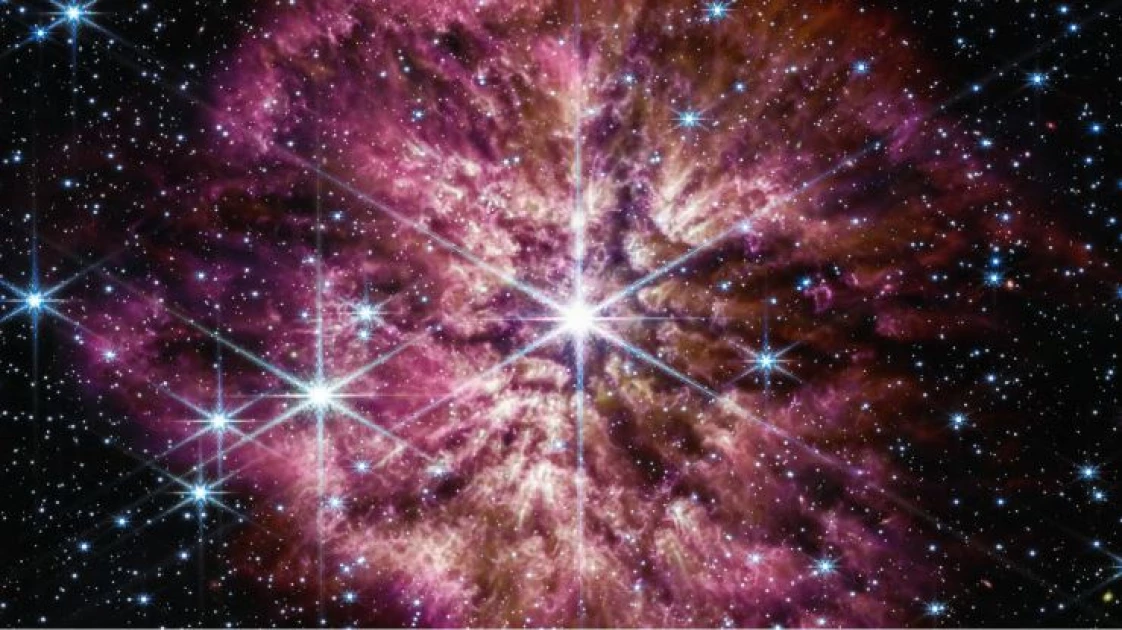Webb telescope spots a star on the brink of exploding

The space observatory captured a scintillating image of a Wolf-Rayet star called WR 124 in the Sagittarius constellation. Wolf-Rayet stars are some of the most luminous and massive stars in the universe.
Some stars briefly become a Wolf-Rayet before they explode in a supernova, so it’s rare for astronomers to spot them.
The big, bright stars burn through their fuel, like hydrogen over a few hundred thousand years — which is a short time, astronomically speaking. The stars release their outer layers in rings of gas and dust. Then, they explode.
The Webb telescope glimpsed WR 124 during some of its first scientific observations in June 2022. The new image, released by NASA on Tuesday at the South by Southwest Conference in Austin, Texas, reveals unprecedented details in infrared light, which is invisible to the human eye.
The star, surrounded by a halo of glowing gas and dust, shines at the center of the image.
The Wolf-Rayet star observed by Webb is 30 times the mass of our sun, which has a mass of about 333,000 Earths. So far, WR 124 has shed about 10 suns’ worth of material, creating the cool, glowing gas and cosmic dust seen in the image.
On Earth, dust is regarded as an annoyance that needs to be cleaned up. But cosmic dust across the universe swirls together with gas to form stars, planets and the very building blocks of life.
Astronomers are trying to understand why there is more dust in the universe than their theories can explain, and tools like the Webb telescope could shed new light on this astronomical ingredient.
The observatory can both see and see through dust using its observational capabilities in infrared wavelengths of light, including the brightness of the WR 124 star, the details of the gas surrounding it and the clumpy structure of the ejected stellar material in the halo.
Studying stars like WR 124 with Webb helps astronomers understand what happened in the early days of the universe, when dying stars exploded and released heavy elements that ended up on Earth and inside our own bodies.
“At the end of a star’s life, they shed their outer layers out into the rest of the universe,” said Dr. Amber Straughn, astrophysicist at NASA’s Goddard Space Flight Center and Deputy Project Scientist for the Webb telescope’s science communications, at the conference.
“I think this is one of the most beautiful concepts in all of astronomy. This is Carl Sagan’s stardust concept, the fact that the iron in your blood and the calcium in your bones was literally forged inside of a star that exploded billions of years ago. And that’s what we’re seeing in this new image. That dust is spreading out into the cosmos and will eventually create planets. And this is how we got here, in fact.”
Want to send us a story? Submit on Wananchi Reporting on the Citizen Digital App or Send an email to wananchi@royalmedia.co.ke or Send an SMS to 25170 or WhatsApp on 0743570000
Comments
No comments yet.


Leave a Comment